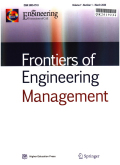- 钛学术文献服务平台 \
- 学术期刊 \
- 工业技术期刊 \
- 一般工业技术期刊 \
- 工程管理前沿(英文版)期刊 \
Sequential degradation-based burn-in test with multiple periodic inspections
Sequential degradation-based burn-in test with multiple periodic inspections
基本信息来源于合作网站,原文需代理用户跳转至来源网站获取
摘要:
Burn-in has been proven effective in identify-ing and removing defective products before they are delivered to customers.Most existing burn-in models adopt a one-shot scheme,which may not be sufficient enough for identification.Borrowing the idea from sequential inspections for remaining useful life prediction and accelerated lifetime test,this study proposes a sequential degradation-based burn-in model with multiple periodic inspections.At each inspection epoch,the posterior probability that a product belongs to a normal one is updated with the inspected degradation level.Based on the degradation level and the updated posterior probability,a product can be disposed,put into field use,or kept in the test till the next inspection epoch.We cast the problem into a partially observed Markov decision process to minimize the expected total burn-in cost of a product,and derive some interesting structures of the optimal policy.Then,algorithms are provided to find the joint optimal inspection period and number of inspections in steps.A numerical study is also provided to illustrate the effectiveness of our proposed model.

推荐文章
Burn-in对SRAM器件电离总剂量效应的影响
SRAM器件
工艺尺寸
高温老炼
电离总剂量效应
基于AGREE算法与BURN-IN算法的平原灌区DEM河网提取问题剖析
Agree算法
Bum-in算法
DEM
灌区
河网
内容分析
关键词云
关键词热度
相关文献总数
(/次)
(/年)
文献信息
| 篇名 | Sequential degradation-based burn-in test with multiple periodic inspections | ||
| 来源期刊 | 工程管理前沿(英文版) | 学科 | |
| 关键词 | |||
| 年,卷(期) | 2021,(4) | 所属期刊栏目 | |
| 研究方向 | 页码范围 | 519-530 | |
| 页数 | 12页 | 分类号 | |
| 字数 | 语种 | 英文 | |
| DOI | |||
五维指标
引文网络
引文网络
二级参考文献 (0)
共引文献 (0)
参考文献 (0)
节点文献
引证文献 (0)
同被引文献 (0)
二级引证文献 (0)
2021(0)
- 参考文献(0)
- 二级参考文献(0)
- 引证文献(0)
- 二级引证文献(0)
引文网络交叉学科
相关学者/机构
期刊影响力
工程管理前沿(英文版)
主办单位:
中国工程院
高等教育出版社有限公司
清华大学
出版周期:
季刊
ISSN:
2095-7513
CN:
10-1205/N
开本:
16开
出版地:
北京市朝阳区惠新东街4号富盛大厦15层
邮发代号:
创刊时间:
2014
语种:
eng
出版文献量(篇)
393
总下载数(次)
1
总被引数(次)
290
期刊文献
相关文献
推荐文献
- 期刊分类
- 期刊(年)
- 期刊(期)
- 期刊推荐

 免费查重
免费查重










